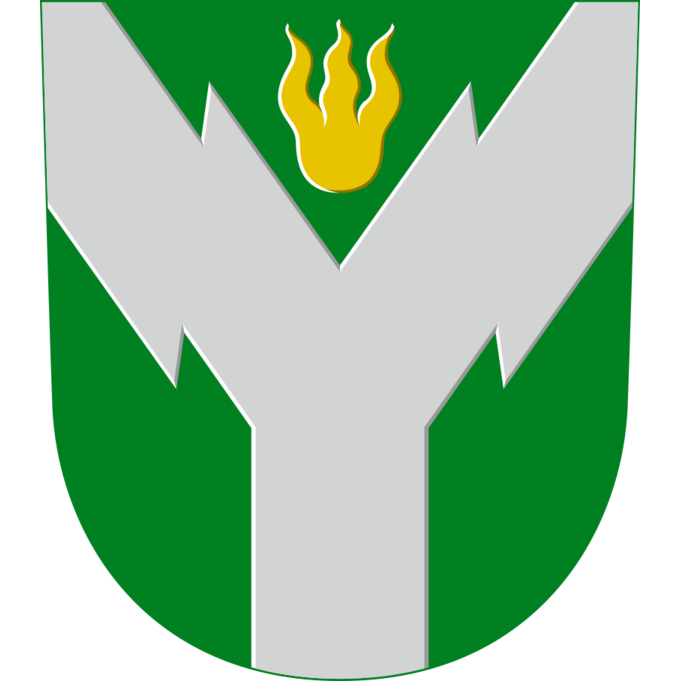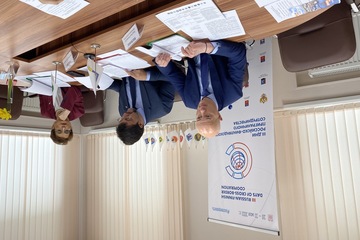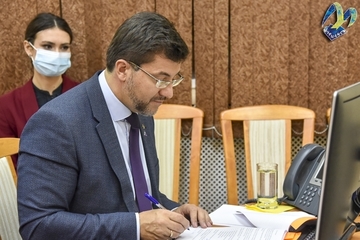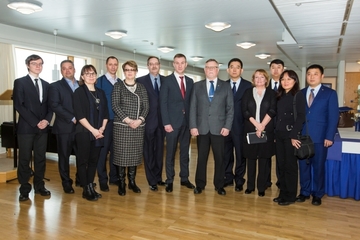
The first settlements in the area where Rovaniemi is now located, in all likelihood, arose in the Stone Age. Periodic clearing of new land for agricultural needs and slash-and-burn agriculture began around 750-530. BC.
The first information about the inhabitants of this territory dates back to the same time as the first mention of the name of the area. The first recorded name of the city dates back to September 7, 1453, although it was known much earlier. It is believed that the toponym "Rovaniemi" is of Sami origin, since the word "roavve" in the Sami language means a mountain range or hill covered with forest, or a place where a forest fire raged.
Rovaniemi is located at the confluence of two main rivers in Finland, as if nature itself made the city the center of Lapland province. The Kemijoki, the longest river in Finland, connects the city to the sea. Road construction began in the middle of the 19th century, and at the beginning of the 20th century, a railway connection appeared. Rovaniemi is now also home to a busy, well-organized airport.
Over the past few decades, Rovaniemi has developed into a dynamic, vibrant city. The population of the city is approximately 60,000 people. 3 percent of the population is employed in the extractive industry, 15 percent in the processing industry and construction. Most of the population (80 percent) is employed in the service sector.
Rovaniemi is the point in the Arctic region that is a meeting place for representatives of international companies, youth and students, athletes, artists, researchers and tourists. In Rovaniemi, conditions have been created for cooperation and cultural exchange with representatives of other regions, the purpose of which is to preserve the distinctive diversity of peripheral regions and develop dialogue between central and remote regions.
Rovaniemi is the educational center of Lapland County, with two universities. The University of Lapland is the northernmost university in Finland and throughout the European Union. The university teaches a wide range of disciplines, the sphere of special professional competence of the university includes issues related to the development of the Arctic region and the tourism industry. The university provides education in tourism, art and design, jurisprudence, teaching and social studies, and conducts scientific research related to the north and the Arctic.
Rovaniemi University of Applied Sciences comprises 6 faculties: Business and Management, Forestry and Agricultural Production, Health and Social Services, Sports and Leisure, Technology, Tourism and Hospitality. The university has created original methods and technologies of an international level in such areas as tourism and outdoor activities, software development, high technologies, activities in a cold climate, ways of measuring functional abilities and motor skills of a person, as well as promoting a healthy lifestyle. Educational and research activities are also carried out on cooperation in the Barents Region, entrepreneurial activities in the field of agriculture, development of sparsely populated regions and the provision of services in the field of healthy lifestyles.
Rovaniemi presents itself as a unique combination of leisure and Lappish nature. The main attractions of Rovaniemi are the Arctic Circle, Santa Claus and Santa Claus Village, Santa Park, Ounaswara Ski and Sports Center, which also houses a beautiful 18-hole golf course, Arktikum Science Center and Museum, Ranua Zoological Park ...
Two unique attractions opened in 2011 – the Korundi Culture House, which hosts exhibitions of the Rovaniemi Museum of Art and the Lapland Chamber Orchestra Concert Hall. Another new point on the city"s tourist map is the Pielke Science Center, where you can learn about the environmentally friendly and rational use of northern forests.
The most important exhibition center and museum in Rovaniemi is Arktikum. The very unique building of the center with its glass corridor is an amazing sight. The museum hosts exhibitions of exhibits from the Science Center, which specializes in research on the inhabitants of the Arctic, the nature and culture of the region, and the Regional Museum of Lapland, which presents the history of Rovaniemi and the Sami.
The development of tourism in Rovaniemi fell on the 90s. About 400,000 tourists visit Rovaniemi every year. The unique location of the city on the border of the Arctic Circle attracts tourists from all over the world. In 2010, the number of visitors was 470,000, more than 50% of which are foreign tourists. Among foreign tourists, Russians accounted for 15%, followed by Germans, British, French, Italians, Spaniards, Dutch and Norwegians.
The peak of tourist activity occurs in the winter: in the period from November to April, the city is visited by 60% of the total annual number of tourists. The main attraction is Santa Claus Village, where Santa welcomes guests at his office all year round.
The economic importance of tourism in the region has grown significantly. Direct income in this area is 170 million euros, the industry employs about 1,600 people.
Facts
The Mayor of Rovaniemi is Ms Ole-Kirsikka Vainio.
Official website of Rovaniemi:


